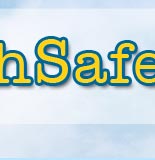There is much controversy about the efficacy of such interventions
Critics of Zero Tolerance Policies have noted that while some aspects of increased vigilance may be useful (for example, increased supervision or monitoring bullying and harassment,) other aspects of Zero Tolerance Policies may create an unwelcoming and scrutinizing school environment that may inadvertently foster more aggression and violence.
There are a variety of diverse activities subsumed under the label Zero Tolerance Policy that may include the introduction of:
• Physical ways to secure the environment.
Examples are: the use of metal detectors, lock downs, locker searches, drug screening and physical alterations to the school grounds.
• Personnel-based programs utilizing security guards, video monitors and increased supervision.
Screening for weapons may be a necessary practice for some schools, however, the manner in which such screening takes place has been found to be an important factor. Snyder, Morrison and Smith (1996) describe a method of screening students for weapons by an Assistant Principal in an urban school. “On entering the school building, each student is greeted by a smile and a welcoming greeting while being checked for weapons. This approach maintains the physical safety of school participants while setting a tone of welcome and caring for students. (Osher et al, 2004)
Mulvey and Cauffman (2001) have observed that in non-supportive environments, students are likely to “hold the school administration in contempt.” They note that the promotion of a positive school environment where students feel connected to the school reduces the likelihood of violent behavior. In considering these risk factors, it is important to keep in mind, however, that…
“Students who are committed to school, feel that they belong, and trust the administrators, are less likely to commit violent acts than those who are uninvolved, alienated and distrustful.” (Mulvey & Cauffman, 802, p.)
Similarly, Zero Tolerance Policies that use school suspensions and school expulsions have been found to increase school problems, school drop out rate and community crime.
In order to conduct a quick check on your students’ sense of school connectedness, ask him/her the following question:
“If you (the student) were absent from school, who besides your friends would notice your absence and would miss you?”







